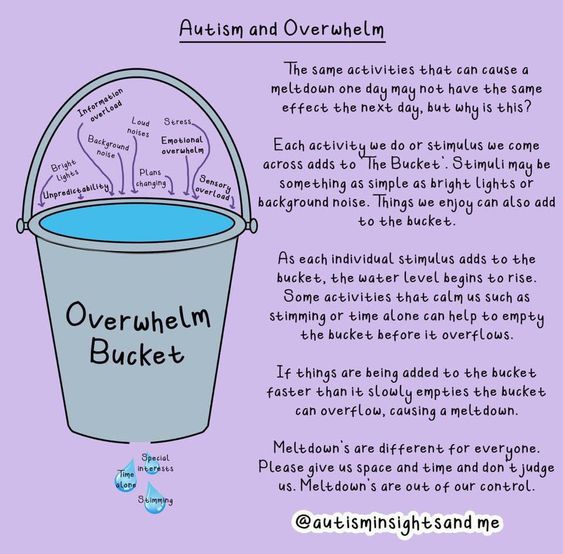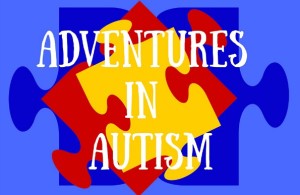I don’t normally do this. My brother writes a blog called Decoding My Autism.net and it’s amazing. I read it all the time and learn so much. This week, his article was one that I just have to share with all of you. So if you would like to read it on his blog you can, but I am including the article below. It was previously published on decodingmyautism.net.
Autism brings many challenges. Perhaps the biggest or most frustrating is when a child loses progress. They’re not able to do things anymore that they used to. They used to talk, but now they don’t. They were fine with going to the store last week, but this week they can’t.
A child stops talking, stops interacting, stops being able to do things. Happening in 1 out of 5 cases, it frequently happens in autism around 18 months to 3 years, leading to questions that arrive at an autism diagnosis. What happened?
In my case, when I was in the 4th grade (age 9), I started bursting into tears in the classroom. No apparent explanation or trigger, I just started crying at my desk. I must have bewildered my teacher.
I’m not a psychologist or neuroscientist. I can’t give you a definitive answer or studies showing what’s going on. But I can share things that I do know and my educated guess as to what is likely happening.
Temple Grandin and Speech
In her book, The Autistic Brain, Temple Grandin shares scans of her brain that show that the section of her brain that connects sight and speech, “say what you see” as she calls it, is only 1% of the size it’s supposed to be. As a result, she says, she had trouble getting the words out.
As she explains, from birth to age 1, a child will babble, making noises to hear what they sound like. Connections are being made between the “what you’re saying” and “what you’re hearing” parts of the brain.
Between the ages of one and two, the brain starts connecting “what you’re seeing” and “what you’re saying”, and kids starts being able to say single words, and you get “Mama”, “Dada”, or “ball”.
In autism, the parts of the brain have trouble talking to each other, and these connections aren’t as strong as they should be. And so, difficulties arise. A child will babble, but it doesn’t turn into words, or words never become sentences. All because those parts of the brain have trouble connecting to each other.
Information Overload
One of the challenges in the autistic brain, as I’ve talked about before in “Information Overload”, is that the brain isn’t filtering the way it should, and too much information is being sent to the decision-making part of the brain, the prefrontal cortex (also responsible for impulse control and regulating emotions).
This information overload makes it difficult for the prefrontal cortex to do one of its jobs, which is to categorize things and form concepts. It makes it difficult to see the similarity in different places and situations. Everything new is completely unfamiliar, making it difficult to try new things, and causing us to prefer the familiar and form repetitive habits.
As I talk about in Social Learning, this makes it difficult to learn to interact socially. We aren’t able to learn “In this situation, I do that”, because we have difficulty forming of the concept of this situation. This makes it challenging to learn appropriate behavior in different situations.
Trying to Keep Up
As we age, the world we are expected to live in, and interact with, gets more and more complex. With our difficulties in comprehending it, we fall further and further behind.
Things get so challenging for us that we not only can’t keep up with our growing world, the challenges we experience can even interfere with what we were already able to do.
Think about it this way. You are shown a screen, and on it is a green ball. You are given the task “Follow the green ball”.
You’re watching the ball. It starts to move around the screen. It starts to move faster. It starts to change direction. It starts disappearing and reappearing. This isn’t too hard, because it’s all that’s on the screen for you to follow.
Now add other balls of different colors. There’s a lot more happening on the screen now. You might say “that’s easy, just ignore the other balls”. But the autistic brain can’t ignore the other balls. It’s difficult to filter things, so the brain pays attention to all of the balls. It gets difficult to follow the green ball.
Now, make things harder, and add other green balls. Which one is the one you’re supposed to be following? This is getting really hard. You still have the same task – follow the green ball – but now things are so challenging and complicated that you aren’t able to do that anymore.
If you were watching someone trying to complete this task, you can see what they’re facing and how challenging it might be. You can see the visual noise that they’re trying to work through.
What this actually looks like in the autistic brain is more challenging to visualize. It may be sound, lights, color, or the feeling of the clothes on our skin. It may be something more abstract, like we may have a traumatic memory that took place somewhere that had a checkered floor, so we can’t handle being in places with checkered floors.
For example, when I was 1 year old, I had motor delays to the point that I wasn’t even rolling over by my first birthday. So I had therapists to help me catch up. They had to come to our home because when I was in their office, something about that office made me cry the entire time I was in there. But I was calm when they came to our home. To this day, my parents and I have no idea what made me cry.
The Overwhelm Bucket
Sometimes, the same thing can be a problem on some days and not be an issue on others. What’s happening? It’s often not about that particular thing, but about other things going on that make the difference, or that on top of those other things, this one thing puts us over the edge.
A few weeks back I came across this wonderful tool to explain this – The Overwhelm Bucket:
Photo Credit: Autism Insights
So the same store, the same activity, the same situation can either cause or not cause a problem depending on what else is going on inside our minds.
I don’t have all the answers or definitive proof of what causes issues like this, but hopefully this knowledge will help you better understand what may be going on and give you tools for how to handle it.
Hi, this is Abby again. I LOVE the overwhelm bucket so much because it explains why my son will do well in the store one day but not on another. As I keep in mind that he sees the world differently, and experiences things differently, I am able to be more sensitive to his needs.
I find it’s easier to be patient as I understand him better. That’s why I wanted to share this article. It was very informative! My brother posts regularly, so if you want more insights, feel free to check out decodingmyautism.net.
About Abby Christianson
Abby is capable and caring. She is learning more about Autism and parenthood every day. Having completed training to be an RBT (Registered Behavior Technician) for ABA therapy she is beginning to understand her son. And even though she is the first to admit she makes a lot of mistakes, she is so grateful to be on this journey. She comes from a family with many autistic members. She invites us to join her, as she shares her adventures. She wishes to emphasize that Autism is a difference not a defect. If you or a family member have autism, Abby wants you to know that the challenges can be overcome, and there are blessings in autism. You or your loved one are not sick or broken. Together we will teach the world this new language.
Twitter •








